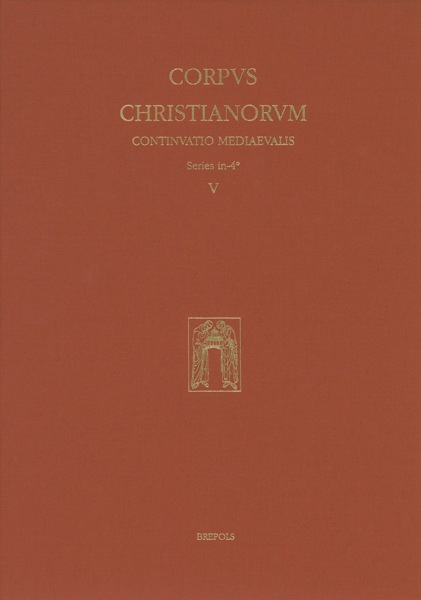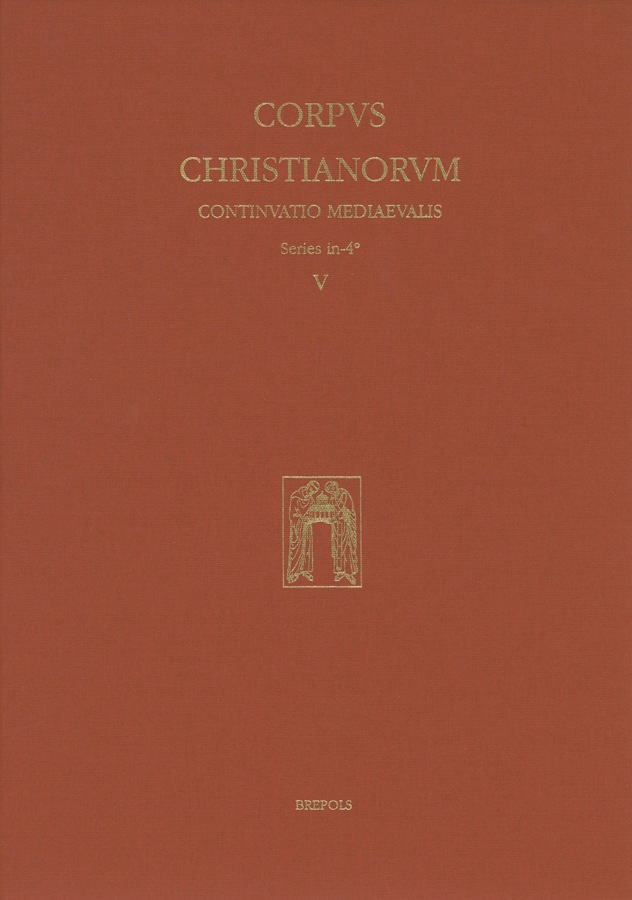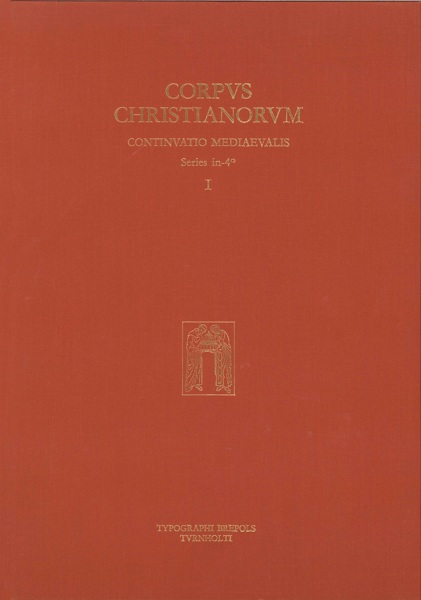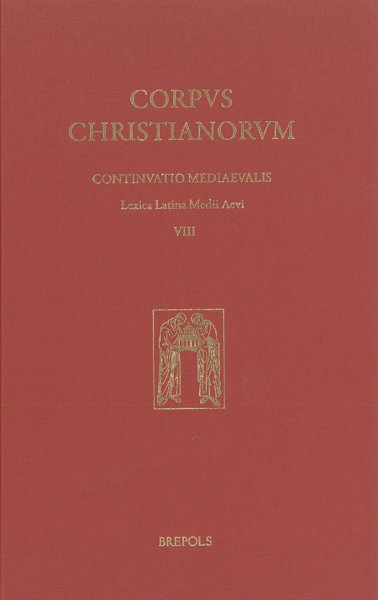
Joan Esteve
The Liber elegantiarum by Joan Esteve
A Catalan-Latin dictionary at the crossroads of fifteenth-century European culture
Lluis Bernat Polanco Roig (ed)
- Pages: 439 p.
- Size:230 x 315 mm
- Illustrations:4 b/w
- Language(s):Latin, Spanish
- Publication Year:2013
- € 395,00 EXCL. VAT RETAIL PRICE
- ISBN: 978-2-503-52586-0
- Hardback
- Available
"Il ne faut pas être grand philologue pour voir tout l’intérêt de ce dictionnaire. […] Ce sont les romanistes qui devraient bénéficier les premiers de la documentation rassemblée. Mais, si l’on prend un peu d’altitude, c’est toute une époque qui revit grâce à cet inventaire ne laissant de côté aucun registre de la vie et de la langue."
(P.-M. Bogaert, in Revue bénédictine, 124 (2014), p. 207)
"Professor Polanco's edition and analysis deserve the highest praise for his admirable rigor and scholarship. A work of this intellectual stature, published in one of Europe's most prestigious collections, is an unquestionable honor for its author and for the culture that he represents."
(F. Feliu & J. Ferrer, in Catalan Review, 28 (2014), p. 247)
"Polanco Roig deserves congratulations for this fine contribution to the study of early Romance lexicography."
(S. N. Dworkin, in Speculum, 89/3 (2014), p. 764-765)
"[...] nos encontramos ante una excelente edición crítica del Liber elegantiarum precedida de un estudio introductorio considerablemente extenso y de altísima calidad. Sin duda, la presente edición va a convertirse en una obra de referencia para el estudio de la lexicografía medieval y de las influencias humanistas en tierras de habla catalana."
(M. Punsola Munárriz, in Estudios Clásicos, 146 (2014), p. 147)
The Liber elegantiarum (Venice 1489), by the Valencian notary Joan Esteve (fl. c. 1442-1487), is an outstanding and quiet original product of early humanistic European lexicography. Conceived partly as a bilingual Catalan-Latin dictionary, it by far surpasses this goal to become in addition an epistolary manual and an aid to grammar, besides providing an often picturesque collection of humanist sayings and literary excerpts. Above all it offers dramatic evidence of the multifacetted expansion of Italian humanism and the crucial role played by the brilliant Neapolitan court of the King of Aragon. As a Romance lexicon, Joan Esteve’s work is also one of the first great repertories to include the vernacular as a source language (slightly after Tranchedini’s Vocabolario) and probably the first to be printed, before Palencia’s Universal Vocabulario (1490), Nebrija’s Dictionarium (c. 1495) or Valla da Girgenti’s Vocabularium vulgare (1500).
This edition of the Liber elegantiarum is comprised of two main parts. The first consists of a complete introduction analysing the broad spectrum of its historical, textual and lexicographical aspects. After a revision of previous studies and comments on the Liber elegantiarum, a thorough description and collation of all extant copies confirm that this is indeed a unique Venetian edition, which can be reconstructed and explained by the new data provided. Information about the life and activities of the author, Joan Esteve, is also considerably expanded, namely concerning his stay in Italy and his various occupations in Naples, as a royal scribe and others, before practicing as a notary in Valencia. The work is conveniently framed within the context of the educational evolution in the late medieval period and its grammatical, rhetorical and lexicographical traditions, thus better identifying and evaluating the wide range of sources (from classical to mediaeval and humanist), that have been notably enlarged. Finally, the heterogeneous and loosely ‘lexicographical’ technique is examined in detail.
The second part is a complete critical edition of the dictionary itself. The critical apparatus is primarily aimed at recording its very frequent printing errors and the alternative readings found in its numerous sources. These include a full range of genres (lexicography, grammar, rhetoric, chronicle, novel, theatre, dietetics) and of periods, from classical (Festus, Fulgentius, Nonius Marcellus) to medieval (Papias, the Catholicon), and especially humanistic authors (Barzizza, Caoursin, Facio, Fieschi, Filelfo father and son, Perotti, Piccolomini, Platina Poggio or Valla), systematically identified and reported in the apparatus fontium. In the complementary section of notes (Adnotationum) comment is offered on the adaptation of the source texts, many of them lacking critical editions and conveniently transcribed for the first time. Finally, a comprehensive Index fontium (of all souces and quotations) and a Bibliography are included.
Lluís B. Polanco Roig is Senior Lecturer at the University of Valencia. His research has focused on several areas embracing sociolinguistics, language planning and language history, mainly in relation to the Catalan language. Since 1989 he has been a member of the Secció Filològica of the Institut d’Estudis Catalans (Catalan Academy of Sciences and Letters).





